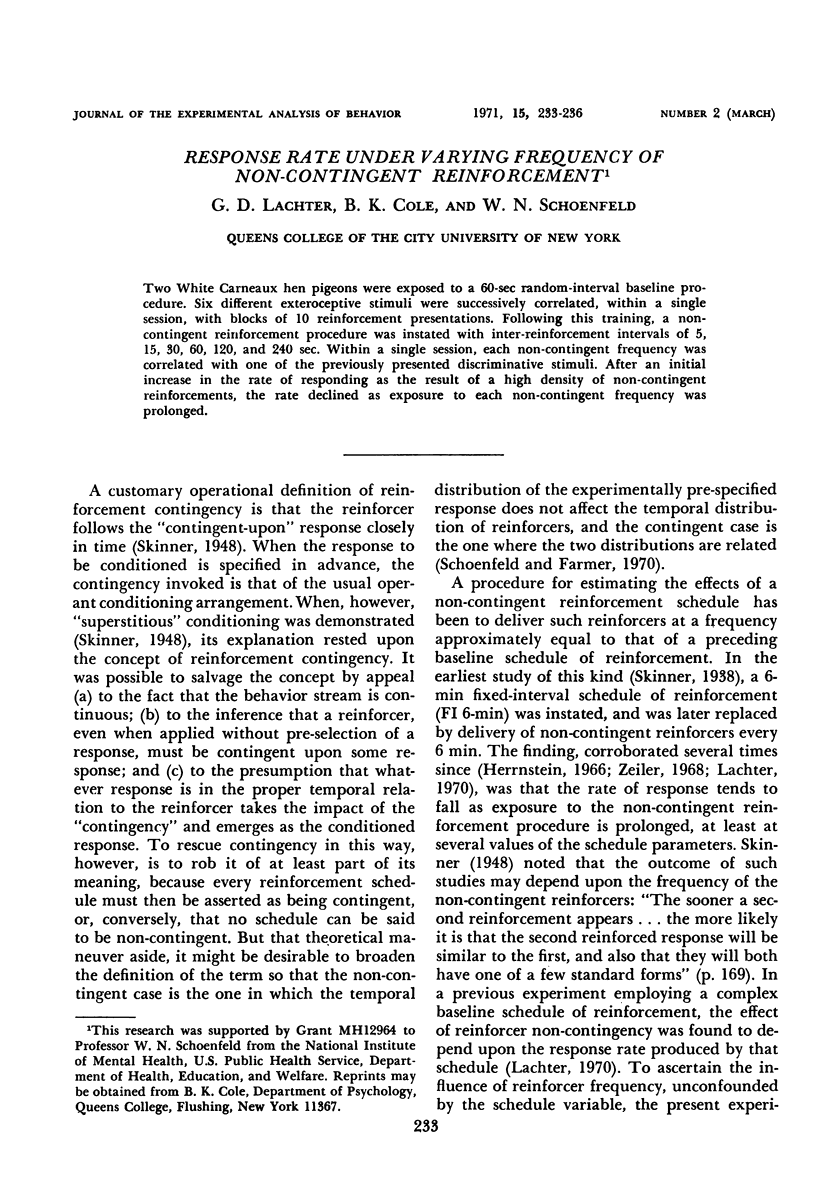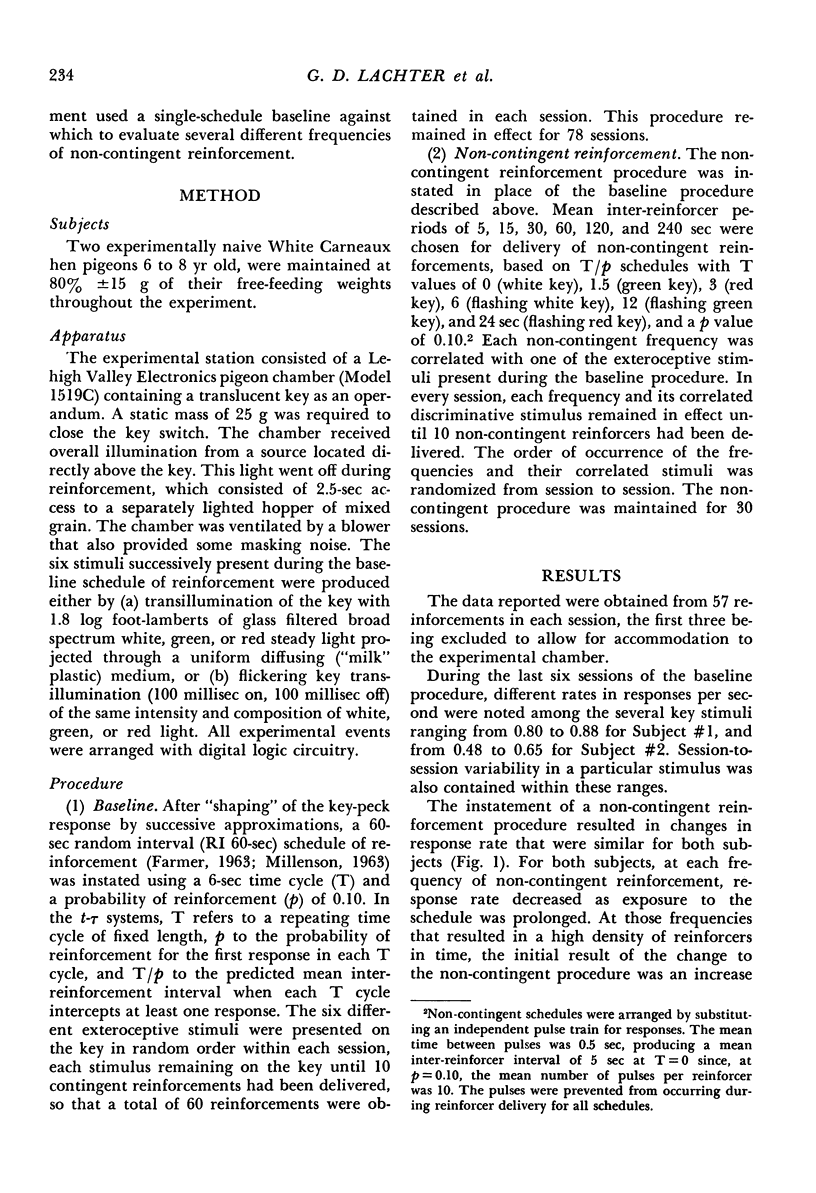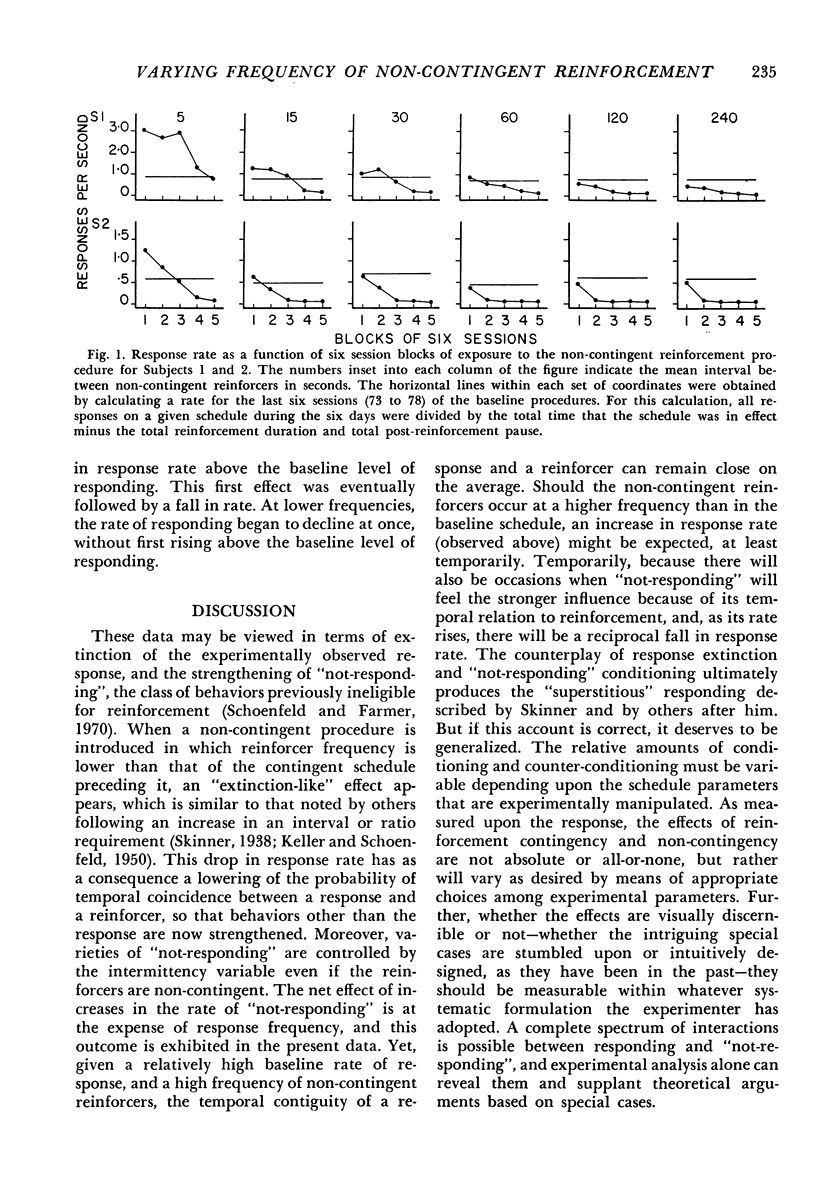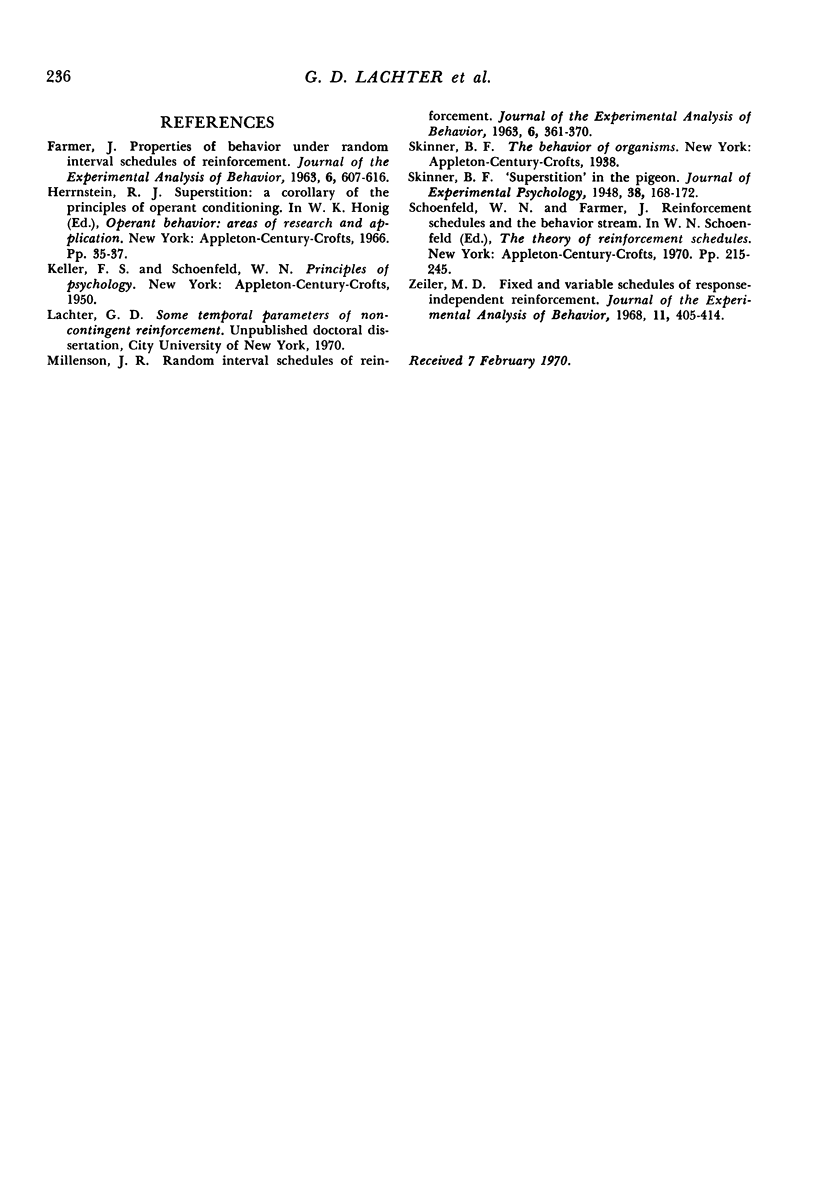Abstract
Two White Carneaux hen pigeons were exposed to a 60-sec random-interval baseline procedure. Six different exteroceptive stimuli were successively correlated, within a single session, with blocks of 10 reinforcement presentations. Following this training, a non-contingent reinforcement procedure was instated with inter-reinforcement intervals of 5, 15, 30, 60, 120, and 240 sec. Within a single session, each non-contingent frequency was correlated with one of the previously presented discriminative stimuli. After an initial increase in the rate of responding as the result of a high density of non-contingent reinforcements, the rate declined as exposure to each non-contingent frequency was prolonged.
Full text
PDF



Selected References
These references are in PubMed. This may not be the complete list of references from this article.
- FARMER J. PROPERTIES OF BEHAVIOR UNDER RANDOM INTERVAL REINFORCEMENT SCHEDULES. J Exp Anal Behav. 1963 Oct;6:607–616. doi: 10.1901/jeab.1963.6-607. [DOI] [PMC free article] [PubMed] [Google Scholar]
- SIDLEY N. A. Two parameters of a temporally defined schedule of negative reinforcement. J Exp Anal Behav. 1963 Jul;6:361–370. doi: 10.1901/jeab.1963.6-361. [DOI] [PMC free article] [PubMed] [Google Scholar]
- Zeiler M. D. Fixed and variable schedules of response-independent reinforcement. J Exp Anal Behav. 1968 Jul;11(4):405–414. doi: 10.1901/jeab.1968.11-405. [DOI] [PMC free article] [PubMed] [Google Scholar]


